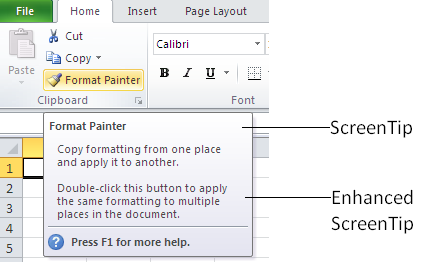You will read about Variables a
lot while learning VBA and we use them to a very large extent in most of the codes we write. It’s better to know about them before starting real
coding. So, let’s see.
Variable is essentially a storage location where you can store
data. As the name suggests, this value can be changed during the macro
execution. You can literally define any number of variables you need to work in
your project but each variable will have to be differently named.
Naming a Variable
There are some rules to follow
while naming a variable. Let’s see what they are below.
- Name length must be within 255 characters
- Space, Period (dot/full stop), exclamation (!), @, &, $, # cannot be used in the name
- Should not begin with a number
- Reserved names cannot be used
- Names are not case sensitive
- You cannot duplicate names in the same procedure
Declare a Variable
If you decide to use a variable
in your procedure, you will have to declare that to VBA. This is usually done
with a key word Dim. For example: if I have to use a variable named
MyVal, I enter the following line in
my code.
Dim MyVal
If you place this line after Sub statement, this variable can be
used anywhere in the same macro until End
Sub. If you place this at the start of the module code before any Sub
statement, you can use this variable throughout all the macros written in that
module.
Variables occupy memory to work
with. Though VBA is capable of deciding the nature of the variable when it encounters
the actual usage of variable in a line of code, it is usually useful to define
the data type for which this variable is used. For example: you can define if
you are going to use the variable to store a text string or a date or another
object etc. Defining this would help VBA to reserve exact memory required and
often it saves from risk of storing an unintended value. To define the data
type, you will have to enter below line.
Dim MyVal As XX
You have multiple options to use
in place of XX. See below to know what those are.
So if you want your variable
named MyVal to store a number that is between 0 and 255, you declare it as in
below line.
Dim MyVal as Byte
If you or your procedure tries to
give a value to variable that is outside of 0 and 255, you will get a run time error.
Look at the below picture, I declared variable as byte and tried to set its
value to 2556 and executed the code. This is the error I got.
As said earlier, declaring the
variable in advance is not mandatory. In the code in above picture, I can
straight away enter MyVal = 2556 without declaring the variable. However this
causes few problems. If you do not declare the variable and data type, VBA
reserves more memory than required. One more problem is that you cannot capture
correct data type in the variable. In above example: your intention is not to
store any number outside 0 and 255, but if you don’t declare the data type, VBA
happily accepts the number 2556. One more problem is related to misspelling.
VBA might take any misspelt words as a different variable and your project may produce
undesired results. If you want to mandate VBA to ask for declaration of every
variable, read about Option Explicit below.
Option Explicit
This is to make sure you declare
each variable before using it in the module. Enter Option Explicit at the top of module, before starting of any code
with Sub. You can also click on Tools
> Options > Editor tab > check or clear Require Variable Declaration.
Declaring Multiple Variables
Many times, you might have to use
more than one variable in your module. You can declare all of them in 2 ways as
shown below.
Method 1
Dim MyVal As Byte
Dim MyName As String
Dim Cl As Range
Dim SelOpt As Boolean
Method 2
Dim MyVal As Byte, Dim MyName As
String, Dim Cl As Range, Dim SelOpt As Boolean
Finishing Touch
Once you declare variables, you
can start using them to store values so that they can used somewhere else in
your code. For example, copy the below code in to a VBE window and press F5.
Sub Test()
Dim UserName As String 'Declaring variable
UserName = Application.UserName 'Passing value to variable
MsgBox ("You are signed in as " & UserName) 'Using variable in another action
End Sub
Running this code on my system will
show me a dialogue box as show below.



























